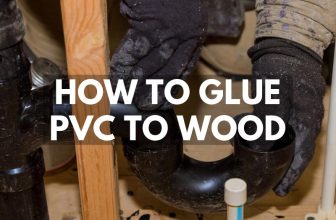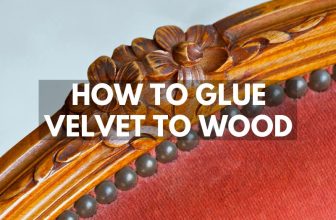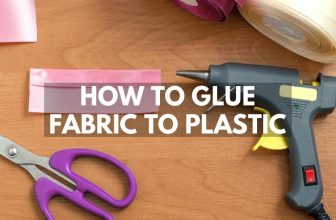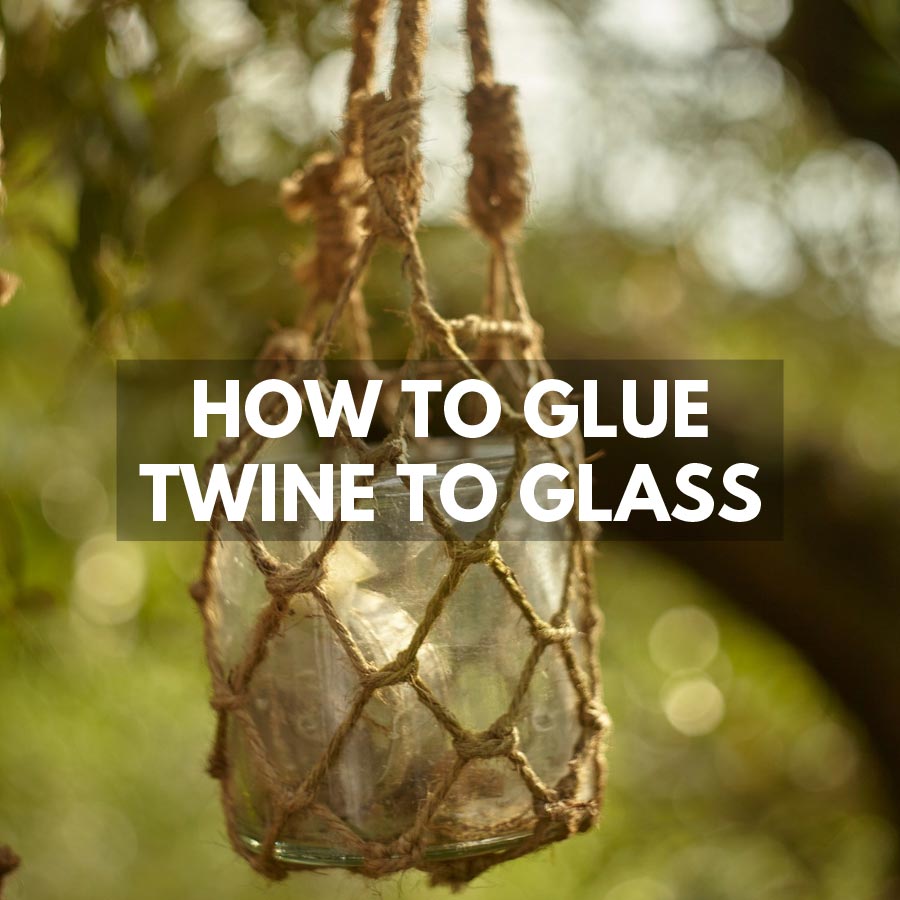
To answer the question of how to glue twine to glass, the answer is using 2-part epoxy adhesive, contact cement, or hot glue. These three are chosen since they have the highest ability to be secured to glass with a mechanical and physical bond that holds up better than any other hobby adhesive. All of these adhesives are easy to use yet, they will all have different drying and curing times.
In the effort of time that’s spent, some of these twine glues have short drying times, while other glass adhesives are meant to dry overnight. What you can learn from each of these adhesives will improve your ability to choose which adhesive is best and why others are recommended. Since gluing twine to glass is growing in popularity once again, these adhesives are also going to stick both together with less chance of the twine falling off later.
Depending on the type of glass that is being used or the color of twine that is chosen, certain adhesives will be better-suited for each project. The same will apply for deciding to use longer curing adhesives where a post-curing environment is required. Being patient wrapping or applying twine to glass is a matter of patience which is also why it’s better to learn about how each of these adhesives is working.
You may also like our guide on how to glue acrylic to glass for more ideas.
What Glue Can You Use for Twine to Glass?
There are essentially three good choices for gluing twine onto glass surfaces and each of them requires preparation steps before and afterward so they will work effectively. What you can learn about how these adhesives work will be essential for select applications and the length of time that’s spent to glue twine to glass. Here are the following choices:
Epoxy Resin
Using epoxy resin is pretty simple since it doesn’t cure very quickly if you choose an epoxy that gives you plenty of working time. Most hobby epoxy takes about 1-hour and will take longer when the room temperature is cooler than 75 degrees Fahrenheit. There are brands of epoxy that can take longer to cure when more time is needed. It goes without saying that 5-minute epoxies are the worst choice since they cure too fast to work with.
Contact Cement
Contact cement is another good choice for gluing twine to glass but there is a trick to keeping the twine from falling off. Commonly, contact cement works great when two surfaces are coated and allowed to dry. These surfaces are pressed together to complete the bond. So, the big question of wondering about using contact cement to glue twine to a glass surface is simple. It all starts with the first coat of contact cement onto the glass surface and allowing it to dry.
After this, fresh contact cement is added to the glass again when twine is wrapped over the surface. As the contact cement absorbs into the twine, this allows a better glue bond when the fresh cement dries since it will be somewhat soaked into the twine. This is the best method that will also keep the twine from slipping or falling off later when the cement is totally dry.
Hot Glue
Hot glue works great for attaching twine to glass with very little effort. Since the glue comes out of the glue gun at a temperature that can burn skin, only apply hot glue in a thin line to attach the twine in sections. The glue will also start to cool down very quickly so this also requires working fast to adhere twine to glass surfaces. Glass must be clean and free from oils otherwise the glue will pop off. Pre-sanding the glass is also recommended for the best adhesion.
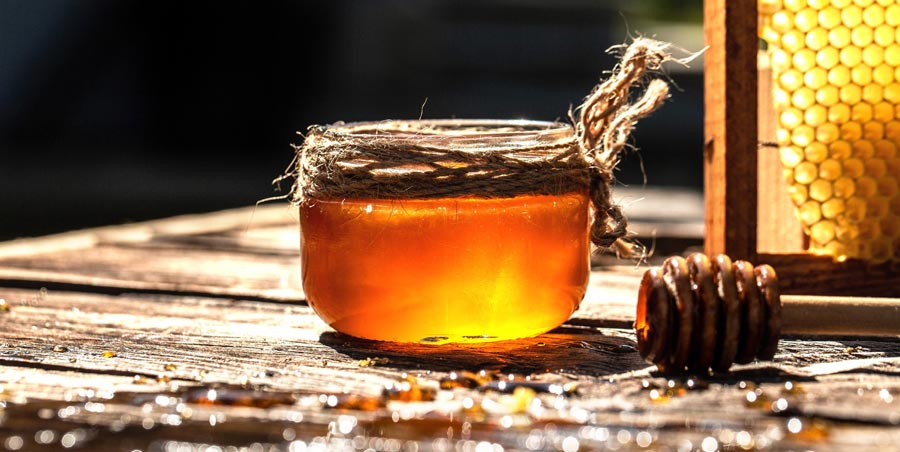
How to Prepare Twine and Glass Before gluing?
Twine is a natural fiber material made from jute, hemp, cotton, and linen depending on the type that you purchase. Thicker twine is often made from hemp or jute and has great properties for holding strength and is best for wrapping or binding objects. It’s also absorbent which makes it easy to glue to glass surfaces that are coated with adhesive beforehand.
There’s not much need to prepare twine beforehand so only the glass surface should be prepped before the adhesive is used. A light sanding of the glass surface using some 1000 grit sandpaper is good to scuff up the surface so the adhesive sticks better. Only use the sandpaper where the glue is applied otherwise the glass will appear frosty.
How to Apply Glue for Twine to Glass
Contact cement is the only glue that you’ll want to apply a base coat and let it dry before adding another wet layer to lay on the twine. Hot glue needs a thin strip that’s added where you are adding twine. Only add as much adhesive as you can handle in stages if using hot glue. If a bottle is being wrapped in twine, work with a two-inch-wide strip and wrap what is needed until that strip is covered before adding more adhesive where it’s needed.
To apply the adhesive, it’s practical to use a disposable brush (aka acid brush or -inch chip brush). Brushes will give a thin layer of adhesive rather than a spatula or pop stick. A disposable brush is good since it can be used once and then thrown away.
How to Cure Twine to Glass Glue
Using epoxy on glass, it will cure sooner when placed in a warm and dry room. This helps to complete the chemical reaction in the epoxy and will come to a complete cure in 2 to 5 hours. Some epoxy can take longer to cure, so allow at least 12-15 hours for a total cure time. Contact cement is air dry glue that is sped up using a blow dryer on low heat. If a new layer is painted over a dry layer, it can take 10 to 15 minutes before it starts drying by itself.
When using hot glue, there is no need to wait for it to cure since it works by cooling off. If the glass is cold, it sets up much faster. Working in a warm room is better so there is more working time.
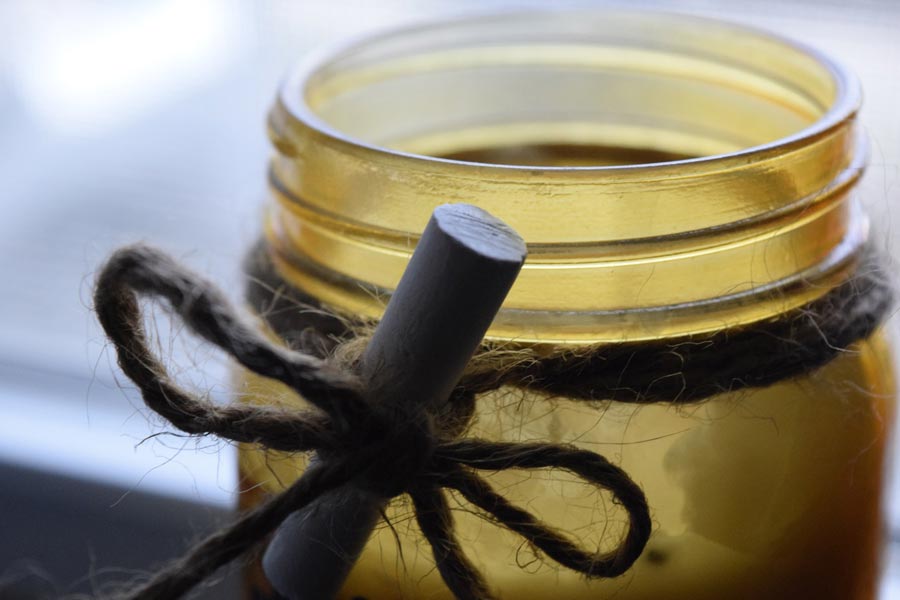
Which Glue Works Best on Twine and Glass?
In terms of simplicity, hot glue is a good choice to glue twine to glass right away. The best tip is to apply the glue and immediately position the twine onto the glue. Use a pop stick to push the twine into the glue or use tension on the twine if wrapping it around rounded objects. Hot glue also comes in a variety of colors but is primarily transparent for most brands that are sold. Scuff up the hot glue stick with sandpaper so it feeds through the glue gun easier.
Epoxy adhesive is good if you have plenty of time to pre-sand the glass and add epoxy in a layered section so it doesn’t run everywhere. Contact cement is nice if you don’t mind the smell of this glue and pre-coat the bottle so you have a double layer of glue to better attach the twine. If you don’t add a base layer of contact cement, the bond between the glass and twine just won’t be as strong.







